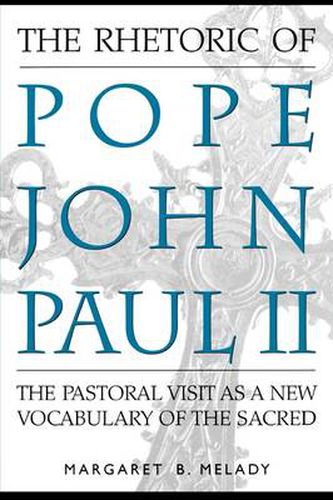Readings Newsletter
Become a Readings Member to make your shopping experience even easier.
Sign in or sign up for free!
You’re not far away from qualifying for FREE standard shipping within Australia
You’ve qualified for FREE standard shipping within Australia
The cart is loading…






John Paul II’s frequent use of international pastoral visits to communicate directly with local church members and the society in which they live has become a distinctive mark of his papacy. While media coverage of these visits is extensive, most commentators are perplexed by the Pope’s style. This text explains this ambiguity by examining John Paul II’s rhetorical strategy and analyzing his purposeful choices in planning, arranging themes, managing form and imagery, and performing the visit. Using the 1987 visit to the United States as a prototype for rhetorical study, the author treats the visit’s discourse and symbols, and their contexts and arrangements, as observable data that can be interpreted using the accommodation-resistance dialectic to locate religious vocabularies in relation to a church and society deeply affected by secularization and pluralism, and as a way of speaking about the sacred.
$9.00 standard shipping within Australia
FREE standard shipping within Australia for orders over $100.00
Express & International shipping calculated at checkout
John Paul II’s frequent use of international pastoral visits to communicate directly with local church members and the society in which they live has become a distinctive mark of his papacy. While media coverage of these visits is extensive, most commentators are perplexed by the Pope’s style. This text explains this ambiguity by examining John Paul II’s rhetorical strategy and analyzing his purposeful choices in planning, arranging themes, managing form and imagery, and performing the visit. Using the 1987 visit to the United States as a prototype for rhetorical study, the author treats the visit’s discourse and symbols, and their contexts and arrangements, as observable data that can be interpreted using the accommodation-resistance dialectic to locate religious vocabularies in relation to a church and society deeply affected by secularization and pluralism, and as a way of speaking about the sacred.